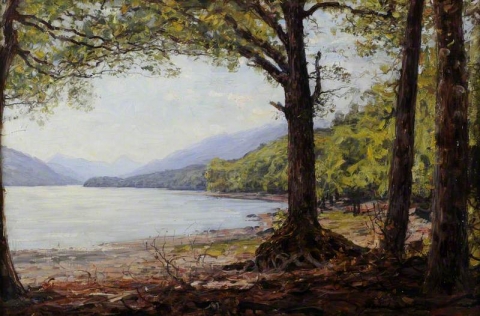Lost Treasure of Loch Arkaig

Loch Arkaig (Scottish Gaelic: Loch Airceig) is in Lochaber, Scotland, to the west of the Great Glen (Scottish Gaelic: An Gleann Mòr). It is a freshwater loch and approximately 12 miles (19 km) in length and a maximum depth of about 300 feet (91 m). At the eastern end of the loch are two small islands. The largest of which, Island Columbkill, is the site of a ruined chapel dedicated to St Columba which is the former burial ground of the Camerons of Locheil.
There are a number of legends associated with the loch, not least as the site of a kelpie (water horse); a mythical creature said to inhabit a number of Scottish lochs. Loch Arkaig is also the place said to be the location of hidden treasure. In 1746, gold in support of the Jacobite cause was reported to have been concealed here. In the form of gold coins, French and Spanish gold arrived in Scotland on April 1746 on the ships Mars and Bellona. However, on learning of the Jacobite defeat at the Battle of Culloden on 16 April, the ships left, unloading only the seven caskets of Spanish money at Loch nan Uamh, Arisaig on 30 April.
Six caskets of this treasure were said to have been brought to Loch Arkaig and hidden. The money was to be used to assist the Jacobite clansmen who were being subjected to the brutal atrocities of the Hanovarian English Duke of Cumberland who was also given the nickname “Butcher Cumberland”. The hated Duke of Cumberland, who was the third and youngest son of George II of Great Britain, is noted for his brutality. After the Battle of Culloden he ordered his troops to show no quarter against any remaining Jacobite supporters killing the defeated and wounded soldiers they found.
The secret of the treasure at Akraig was entrusted to Murray of Broughton, who began the distribution to clan chiefs. After his arrest the treasure was entrusted first to Lochiel, the chief of Clan Cameron, and then to Macpherson of Cluny, head of Clan Macpherson. Cluny was in hiding at this time and remained so for a number of years, however, he still retained control of the hidden treasure. He eventually escaped into exile in France where he died on 30 June 1764. Since that time the fate of money remains unknown. Accusations remained rife about what happened to the gold among the Highland chiefs and Jacobites in exile for many years. There are many who believe that at least part of the hoard remains buried close to Loch Arkaig.
Image: Loch Arkaig by Alexander Brownlie Docherty (1862-1940) courtesy of East Ayrshire Council.





